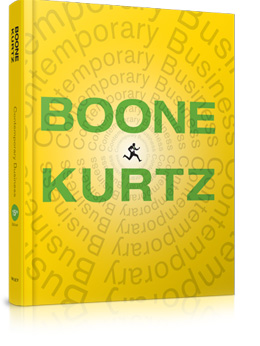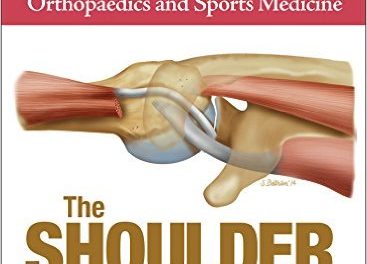 Authors: Dave Kurtz and Gene Boone
Authors: Dave Kurtz and Gene Boone
Publisher: Wiley – 549 pages
Book Review by: Sonu Chandiram
This is the 15th edition of a very popular textbook on many aspects of business as it is done in today’s world.
In addition to nearly 550 pages of information, this book contains five very useful and practical Appendices, one each on: Business Law, Insurance and Risk Management, Personal Finance Planning, Developing a Business Plan, and Careers in Contemporary Business.
Also, the purchasers of this book are provided additional resources, mainly the Boone and Kurtz Student Case Videos and the Weekly Updates.
In our current global village, large, medium-size and even small businesses in the United States face daily competition from firms located overseas in terms of quality, price and service for the many products and services they offer.
If you think that you have a unique product – even with a registered patent – and can feel comfortable that you will get the price you desire for it, you will be in for a big surprise.
The Internet has created a level playing field for all buyers and sellers worldwide. A manufacturer in China or India for example, can create a product very similar to yours and sell it in massive quantities on wholesale sites such as Amazon, eBay, and the like.
Since marketing and selling are the final steps in a business cycle (especially when the issue of collecting payment is eliminated with prepayment before products are shipped) your biggest hurdle is overcome with the help of the Internet. So what are you going to do about global competition?
You must have heard about outsourcing and off-shoring. Outsourcing enables a company to make a product similar to yours in places where they can get capital, materials, labor marketing, transportation, etc. from others at competitive prices.
Off-shoring enables a company to (usually, but not always) establish its own entity outside of the United States – where some or all of the above resources are available – to make the product or provide the service and grab some of the market share away from you. This is sometimes called business-process outsourcing (BPO).
With increasing globalization, current data show that almost all of the S&P 500 firms in the U.S. (the largest in the country) have some sort of presence in India, and in most cases, their purpose is to “buy” quality labor and materials, rather than to sell finished goods or services.
For this reason, I urge intending (and current) business owners to carefully read the section Global Economic Challenges of the 21st Century in Chapter 3, Economic Challenges Facing Contemporary Business and any other section of other chapters that deals with this issue.
Numerous other challenges and obstacles as well as opportunities and solutions to problems are presented throughout this well-organized, well-written and comprehensive guide to present-day business. Its 17 chapters of material are organized around six Parts. Here is a bird’s eye view of the contents of this book, so you may select which subjects you want to read on first, and in what order:
- Business in a Global Environment
- Starting and Growing Your Business
- Management: Empowering People to Achieve Business
- Marketing Management
- Managing Technology and Information
- Managing Financial Resources
This book not only presents material but also stimulates creative thinking and problem-solving. One of the features presented in chapters is a boxed Hit & Miss section that spotlights companies and what sets them apart from others. Then questions are asked of readers in a tab entitled Questions for Critical Thinking.
For example in chapter 4 Competing in World Markets, the Hit & Miss feature is The Tiny Nano – A Potential Hit for Tata Motors. The Tata Nano, the world’s most affordable commercially-available car is selling for around $2,500, and cannot even meet up demand in India. It will take many years before even modified versions are sold in the U.S.
The Hit & Miss feature goes: “When the Tata Nano arrived in the United States from India, it did not hit the road; it went on display at the Cooper-Hewitt National Design Museum in New York. ‘As the world’s most affordable car, it is a design achievement,’ said a museum director.”
“In addition to developing the Nano, the $63-billion Indian conglomerate Tata Motors went on a ‘Western’ shopping spree, purchasing iconic UK luxury car brands Jaguar and Land Rover. The company says that these brands have now become one of the biggest contributors to the firm’s overall earnings.”
One of the two questions asked in the Questions for Critical Thinking tab is this: Do you think Tata’s goal of making affordable transportation in developing countries is realistic? Why?
With the company not being able to supply all its orders in India, what is the answer? Naturally, more data needs to be obtained by the reader to answer this question. What sets this book apart from others? It makes you really think, in order to solve the problems.







